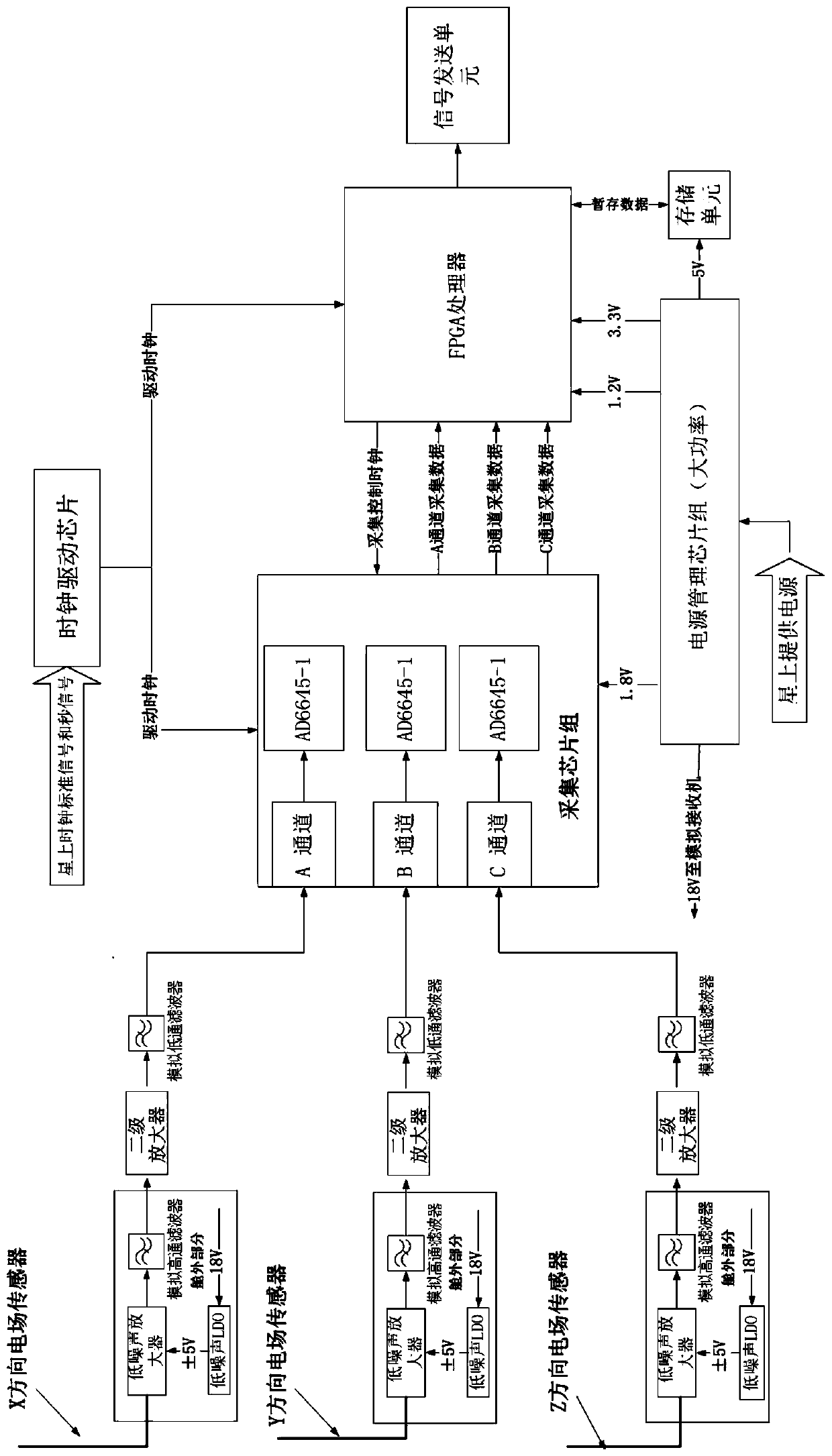Satellite-borne very low frequency solar radio observation system
A technology for solar radio and observation systems, applied in the field of very low frequency solar radio observation systems, to achieve the effects of reducing the amount of transmitted data, reducing the impact of electromagnetic interference, and reducing transmission pressure
- Summary
- Abstract
- Description
- Claims
- Application Information
AI Technical Summary
Problems solved by technology
Method used
Image
Examples
Embodiment 1
[0042] Embodiment 1: as Figure 1-3 As shown, the spaceborne very low frequency solar radio observation system is used to observe low frequency solar radio bursts of 100KHz-20MHz, which includes three electric field sensors, three sets of analog-digital receiver connections, data acquisition and processing modules, time-frequency Module, power supply module, storage module; three electric field sensors are respectively connected with three sets of analog-digital receivers, three sets of analog receivers and time-frequency modules are respectively connected with data acquisition and processing modules, data acquisition and processing modules are connected with storage modules, data The acquisition processing module and three sets of analog receivers are respectively connected to the power module;
[0043] The electric field sensor is a beryllium-copper alloy rod, and the three electric field sensors are arranged on the satellite in a three-orthogonal distribution state of X, Y,...
PUM
 Login to View More
Login to View More Abstract
Description
Claims
Application Information
 Login to View More
Login to View More - R&D
- Intellectual Property
- Life Sciences
- Materials
- Tech Scout
- Unparalleled Data Quality
- Higher Quality Content
- 60% Fewer Hallucinations
Browse by: Latest US Patents, China's latest patents, Technical Efficacy Thesaurus, Application Domain, Technology Topic, Popular Technical Reports.
© 2025 PatSnap. All rights reserved.Legal|Privacy policy|Modern Slavery Act Transparency Statement|Sitemap|About US| Contact US: help@patsnap.com



